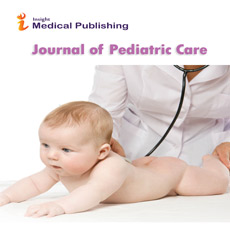Abstract
Cost-effectiveness of Palivizumab in Prevention against RSV Hospitalizations in Risk Groups
Objective: This study aims to evaluate the costeffectiveness of Palivizumab in preventing Respiratory Syncytial Virus (RSV) infection among risk groups.
Methods: Patients enrolled correspond to children aged <2 years admitted in pediatric units of Hotel-Dieu university Hospital (HDF) between January 2014 and January 2016 for RSV infection. We ended up with 32 cases of RSV infection that respond to immunization recommendations and did not receive the prophylaxis. We divided them into 4 groups: Premature babies, those who have congenital heart disease (CHD), those with bronchopulmonary dysplasia (BPD) and those who had more than 2 risk factors. For each group, we compared hospitalization cost to the estimated immune-prophylaxis cost, and we analyzed RSV morbidity in each group.
Results: RSV hospitalization among premature babies is the most frequent, hospitalization cost is the highest in babies with pulmonary disease and the group with heart disease is associated to the highest risk of pediatric intensive care unit (PICU) admission. There was no significant statistical difference between hospitalization cost and immunization cost added to consequent presumed hospitalization.
Conclusion: For a neutral cost-effectiveness of Palivizumab, immunoprophylaxis reduces RSV hospitalization rate, decreases hospitalization stay, need of oxygen, and PICU transfer along with parental anxiety and work abstention. Palivizumab may be cost-effective in subgroups: prematurity <32 week gestation or cardiac and chronic pulmonary diseases aged less than one year at epidemic RSV season.
Author(s):
Elie Choueiry, Bernard Gerbaka , Najib Hanna and Angy Fenianos*
Abstract | Full-Text | PDF
Share this

Google scholar citation report
Citations : 130
Journal of Pediatric Care received 130 citations as per google scholar report
Abstracted/Indexed in
- Google Scholar
- China National Knowledge Infrastructure (CNKI)
- Cosmos IF
- WorldCat
- Geneva Foundation for Medical Education and Research
- Secret Search Engine Labs
Open Access Journals
- Aquaculture & Veterinary Science
- Chemistry & Chemical Sciences
- Clinical Sciences
- Engineering
- General Science
- Genetics & Molecular Biology
- Health Care & Nursing
- Immunology & Microbiology
- Materials Science
- Mathematics & Physics
- Medical Sciences
- Neurology & Psychiatry
- Oncology & Cancer Science
- Pharmaceutical Sciences

